History of The Nerd Part I #13: Decade of the Nerd: The 70’s part 1
In the beginning, God created the Heaven and the Earth. And the Earth was without form, and void. And the Spirit of God moved upon the face of the waters. And God said, “Let there be light.” And then there was light. Then he took a nap until the 70’s and created everything we as geeks and nerds actually care about. Many can argue that nerdom has been around since the beginning of history, but those people would be wrong. They are wrong because they disagree with me and everyone knows I’m always right, especially when I’m not. The 70’s brought to the world: the first personal computer, the start of the Internet, video games, Steven Spielberg, George Lucas, comics stories with adult themes, and major genre television shows. Even the word “Nerd” was first used as a slang term for “a person who is single-minded or accomplished in scientific or technical pursuits but is felt to be socially inept” in 1970. The 70’s gave birth to nerdom and today we look at a small part of it: Computers, Video Games and The Internet.

Computers:
Look at your beautiful computer. It sings to you with its soft humming fan. It tells you the answers to all your questions like “when the movie is going to play?” to “how to get to your ex-boyfriend’s new apartment in order to slash his tires?” Its glowing screen is so warm and inviting that it fills your heart with joy — especially when you’re watching porn. And when it dies on you it feels like your connection to the world is lost. Really, if you had to do a Sophie’s Choice between your computer and your sister you might have to think about it for a second. The computer wasn’t always man’s best friend. There was a time in the long, long ago when the computer used to fill a small airplane hanger with a tangling of wires a diodes. Those early computers couldn’t even play Solitaire. So how did computers shrink down to a small box? It all started with the microprocessor.
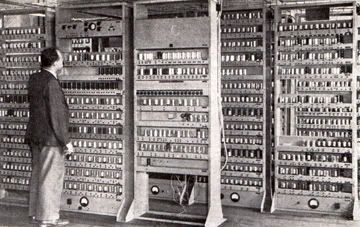
The microprocessor is the magic device that incorporates all of the functions of the CPU (Central Processing Unit or the computer’s brain) into one single integrated unit — but who invented it? Well, nobody knows for sure who came first because three different companies developed similar devices all around the same time. The three companies were Garrett AiResearch, Intel, and Texas Instruments. Nothing advances technology like the universal need to kill one’s enemies more efficiently. In 1968 the US Navy needed a new digital computer to compete with current electromagnetic computers for the main flight control computer of the new F-14 Tomcat fighter jet. For that they turned to Garrett AiResearch and designers Ray Holt and Steve Geller. They completed their design in 1970, which was overwhelmingly superior to the mechanical system and 20 times smaller. All early Tomcats were fitted with Garrett AiResearch microprocessors. In 1971 both Intel and Texas Instruments developed microprocessor originally for handheld calculators. Intel released the 4-bit 4004 chip on November 15, 1971 and some consider it the first commercially available microprocessor but some say Texas Instruments beat them by a month. Texas Instruments introduced the 4-bit TMS 1000 in September 17, 1971 and also filed and was awarded a patent for the single-chip microprocessor architecture on September 4, 1973. Whoever invented it, the microprocessor is a major reason why modern computers are affordable to the average Joe and why the average Joe doesn’t have to set aside an entire bedroom to house it.
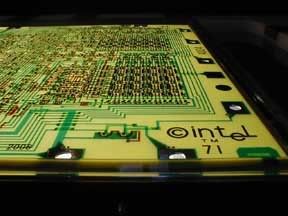

Video Games:
The history of video games does extend before the 70’s but they were mostly MIT students messing around on analog computers out of boredom. In 1971 Nolan Bushnell and Ted Dabney created the first commercially sold coin-operated video game, Computer Space. In the game, the player controls a rocket and fights off two flying saucers hell bent on destruction. At the end of 90 seconds if the player’s score is higher than the saucers’, then the player is awarded another 90 seconds. This cycle continues until the day Jesus returns to smite the wicked. The game was a first, but not a success; and this is despite being featured in the movie Soylent Green (piss, it’s made of people. PEOPLE!!!).
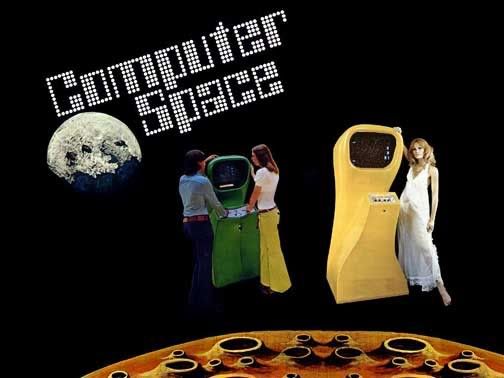
The Magnavox Odyssey, the first home console entered the homes of rich American families in 1972. The Odyssey was packaged with dice, poker chips, and score sheets like a board game because the system couldn’t keep score itself. It also didn’t have sound and needed translucent plastic overlays placed over the TV screen to simulate color. These short falls and crappy marketing by Magnavox in retail stores led to poor sales. Months after the release consumers believed that the Odyssey would only work on Magnavox television sets. The could be that they were misled by some shadowy force or that they were just stupid, no one can know for sure.
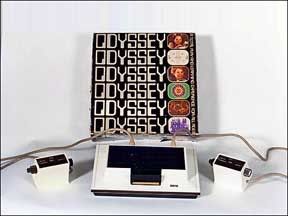
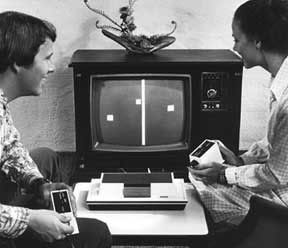
Nolen Bushnell and Ted Dabney created the company Atari and followed their failure of the Computer Space with the crack-like intoxicating success of Pong. The arcade version was released in 1972 and the home console version in 1975. Bushnell was “inspired” by Magnavox’s game Tennis. It “inspired” him to steal the idea outright. This would come back to haunt Atari in the form a lawsuit in 1975. Bushnell would settle out of court in 1976 because legal costs would have destroyed the company regardless of a win. In spite of the lawsuit, Pong improved on the Tennis game with the innovation of sound, a scoreboard, and the paddle changed the angle of the ball depending on where it struck. Before these features the game actually, really, sucked. (Nerd Fact: Women were actually better at Pong than men, on average. Scientists believed that this was because women had better small muscle control. Whatever the reason was, girls in the 70’s would hustle guys at bars with Pong. Now they only hustle guys using sex.)
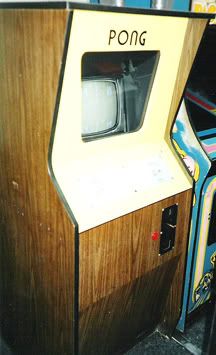

The Internet:
The Internet is your teacher, friend, and lover. The most important thing it brings to you is, of course, Geekscape, so why not celebrate its creation? The precursor to the Internet was the ARPANET (Advanced Research Projects Agency Network). ARPANET was developed by ARPA the Advanced Research Projects Agency (not to be confused with AARP, an association comprised solely of pissed off old people). ARPANET was brought online in 1969 and only connected four computers at major universities: UCLA, Stanford Research Institute, UCSB, and the University of Utah. The true Internet matured in the 70’s through the result of TCP/IP architecture. TCP/IP is a protocol that is the basis for transmitting and routing data packets on the Internet. Its technology is still used today and is the one thing that all current Internet sites have in common. All of this techno speak and jargon is great and also boring. What about the Internet as we know it? The haven for people to say whatever they want without the fear of getting killed by the black guy you called the “N” word, or the fat, powerful guy you called the “F” word that isn’t “Fat”. Let me point you to Usenet.


Usenet, though not technically considered a part of the Internet, because it didn’t use TCP/IP protocols, did allow the connection of Unix systems around the world. Usenet was created in 1979 by graduate students Tom Truscott and Jim Ellis. Usenet users were able to log on and be a part of online discussion groups known as Newsgroups. Newsgroups were like Internet forums today, they ranged from a variety of topics and were posted by people all across the globe. This was originally intended to be a medium for people to share information, ideas, and cultures in a Roddenberryesque utopian online society. People used it, so eventually it devolved into a place of cultist, cliquish behavior full of paranoia and name-calling. This proved that if people are allowed anonymity and a public forum they will turn into ruthless savages who revert to their gradeschool stock derogatory nicknames and expletives. This has continued over the Internets today, I mean just look at the Ain’t It Cool talk backers. (Nerd Fact: Godwin’s Law is an adage coined by Mike Godwin. The law states: “As a Usenet discussion grows longer, the probability of a comparison involving Nazis or Hitler approaches one.”)
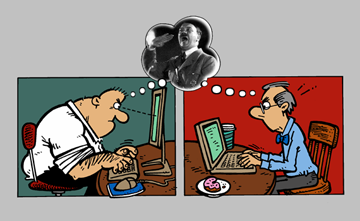
Well, this is it for Part 1 of Decade of the Nerd: The 70’s, come back next week for Part 2: The Movies of the 70’s!
